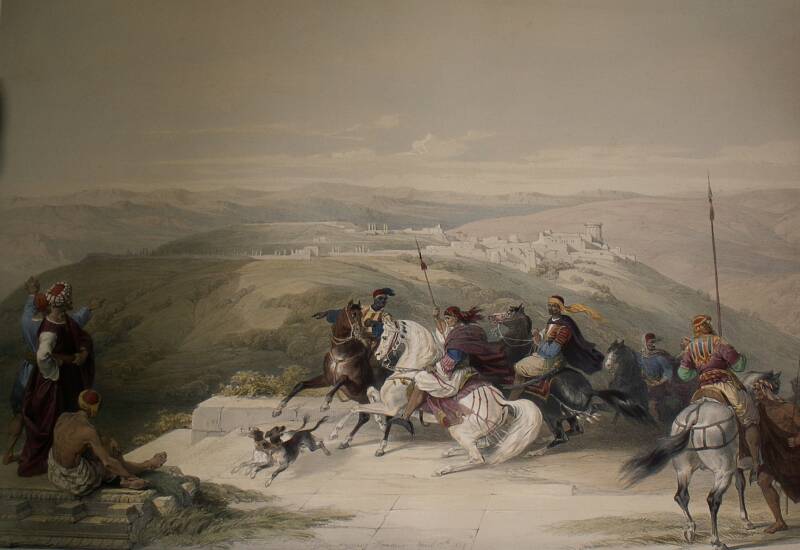
Lithography (from the Greek lithos = stone, graphos
= writing) is the art of printing on stone. It was
invented about 1796 by Aloys Senefelder, a citizen of
Munich. The precess is based on the mutually repellent
character of oil and water.
First an image is drawn in reverse on a smooth slab
of limestone, using a kind of greasy chalk which
interacts with the lime of the stone beneath it. The part
of the surface which has not been drawn on is
desensitized to grease by treatment with a solution of
gum arabic and acids. Once the image has actually
penetrated into the stone the drawing is washed off
the surface with turpentine and water. Greasy printing
ink will then adhere to the stone only where the image
has been drawn and will be rejected by the rest of the
surface, which is kept moist with water. Although the lithographic stones are heavy and expensive, they have the advantage of being usable over and over by the simple process of repolishing the surface after a number of prints have been pulled off, since the image is fixed with in the stone itself. In all, several hundred fine proofs can come from each stone.
Lithographs are rarely in one colour but utilize different stones to represent a varied palette usually consisting of black, grey, white, ochre, tan or pink. The number of colours used will equal the number of stones employed, while the drawing will be retraced where required for each separate colour. The chief difficulty is fixing the sheet so that each impression is "registered" to the previous and following one. Otherwise a blurring effect can mar the print, rendering it unacceptable. This was often done by pinning the sheet down to a specific template in fact, pin pricks on each of the four corners are still visible on nearly all the first edition prints of the Roberts lithographs (on the subscription copies, these were removed by trimming down the paper before it was pasted to the card). Haghe normally used a minimum of two stones for each Roberts print, but often employed several.
The great advantage of the process to an artist is that it producers a full range of black and grey tones and can thus simulate the exact original effect of pen, pencil or brush.
Haghe, the master lithographer of his day, had the laborious
job of redrawing all of Roberts’ original sketches on stone in mirror image, while Roberts worked closely with him to be sure of obtaining a faithful reproduction.
(The above material is taken from the concluding paragraphs of Roberts of the Prints by John Briton, op.cit.)
W h a t i s a l i t h o g r a p h ?